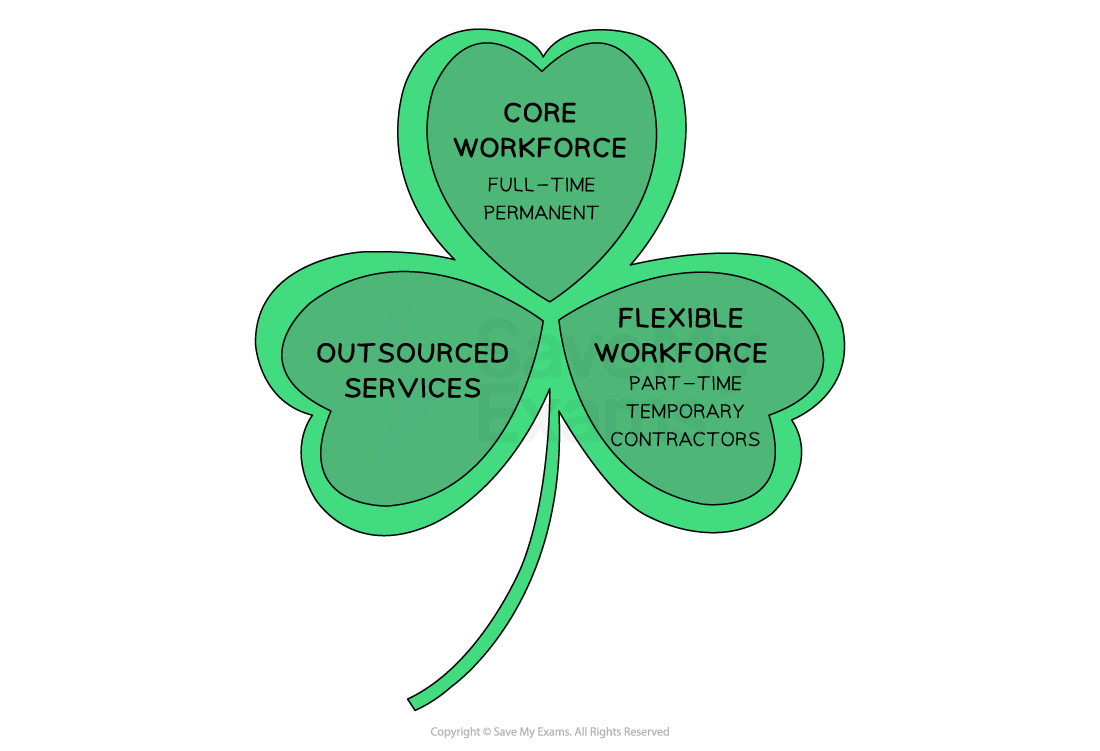- Some businesses choose to adapt their organisation structure to allow them to respond flexibly to changes in the external environment
- Two examples of this are
- Project-based organisation structures
- Shamrock organisation structures
Project-based Organisation Structures
- In a project-based structure employees are assigned to projects full-time
- Project teams are led by project managers who have authority and decision-making power
Diagram of a Project-based Organisation Chart

A Project-based organisation chart showing human resources organised around two projects
- Project-based structures are said to improve collaboration, communication and make use of specialised skills across different projects
- Employees often report to both a functional manager and a project manager or team leader
- These structures are commonly found in industries such as engineering, software development and construction
The Advantages and Disadvantages of Project-based Organisation Structures
Advantages
|
Disadvantages
|
-
Project-based structures allow businesses to allocate resources based on project requirements
-
Project-based structures promote communication and collaboration between different functions/project teams which can improve problem-solving
-
Resources can be reallocated and businesses can respond quickly to changing business needs and market demands
|
-
There are two reporting lines which potentially generates conflicting priorities for employees
-
There is a need for constant communication and coordination across different functional and project teams
-
Conflicts may occur between functional managers and project managers
|
Shamrock Organisational Structures
- Handy believes that:
- Businesses should focus on meeting employees' needs for enrichment and flexibility
- The organisational structures should be dynamic
- Businesses should move away from the traditional employment hierarchy where they offer 'jobs for life'
Diagram Showing the Three Parts of a Shamrock Structure

The Shamrock Organisation consists of core, peripheral and flexible employees
- Core Staff are the small group of individuals who are directly employed by the business
- They typically hold key positions
- They are responsible for strategic decision-making and managing the businesses overall direction
- They are well-paid and have job security
- Flexible Workers are individuals who work for the business on a part-time, temporary, contractual or ad-hoc basis
- They provide flexibility to the business and can be scaled up or down based on the workload
- They tend to be lower-paid for short periods of employment
- Outsourced Services involves giving control over certain functions or services to external third-party providers that handle specific tasks
- Example include IT support, human resources or facilities management
- These are specialist functions and these services may therefore be expensive
- By outsourcing these services the business can focus on its core competencies


